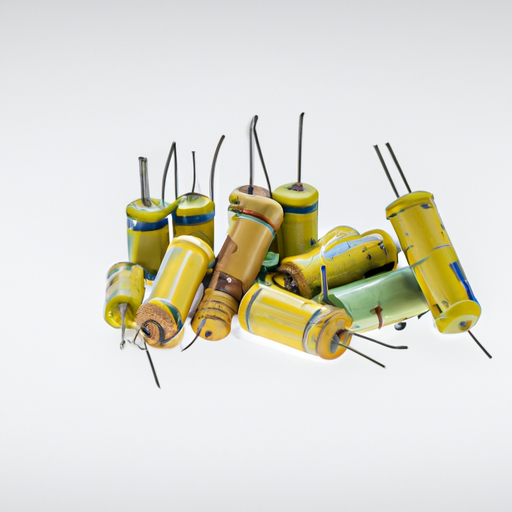What are the market policies for supercapacitor structures?
Market Policies for Supercapacitor Structures
I. Introduction
Supercapacitors, also known as ultracapacitors or electric double-layer capacitors (EDLCs), are energy storage devices that bridge the gap between traditional capacitors and batteries. They store energy through electrostatic charge separation, allowing for rapid charge and discharge cycles. As the demand for efficient energy storage solutions grows, supercapacitors have gained significant attention due to their high power density, long cycle life, and environmental sustainability. This blog post explores the market policies affecting supercapacitor structures, highlighting the regulatory frameworks, market incentives, challenges, and future outlook.
II. Global Market Overview
A. Current Market Trends in Supercapacitors
The global supercapacitor market has witnessed remarkable growth in recent years. According to industry reports, the market was valued at approximately $1.5 billion in 2020 and is projected to reach around $5 billion by 2026, growing at a compound annual growth rate (CAGR) of over 20%. This growth is driven by the increasing demand for energy storage solutions across various sectors, including automotive, renewable energy, consumer electronics, and industrial applications.
B. Applications of Supercapacitors
1. **Automotive Industry**: Supercapacitors are increasingly used in electric and hybrid vehicles for regenerative braking systems, providing quick bursts of energy to enhance performance and efficiency.
2. **Renewable Energy Systems**: They play a crucial role in stabilizing power output from renewable sources like solar and wind, helping to manage fluctuations in energy supply and demand.
3. **Consumer Electronics**: Devices such as smartphones, laptops, and wearables benefit from supercapacitors due to their ability to provide rapid charging and discharging capabilities.
4. **Industrial Applications**: Supercapacitors are utilized in various industrial applications, including uninterruptible power supplies (UPS), backup power systems, and energy recovery systems.
III. Regulatory Framework
A. Overview of Regulations Affecting Supercapacitor Manufacturing
The manufacturing of supercapacitors is subject to various regulations aimed at ensuring environmental safety and product reliability.
1. **Environmental Regulations**: Governments worldwide are implementing stricter environmental regulations to minimize the ecological impact of manufacturing processes. This includes guidelines for waste management, emissions control, and the use of sustainable materials.
2. **Safety Standards**: Safety standards are critical in ensuring that supercapacitors operate reliably under various conditions. Manufacturers must adhere to safety protocols to prevent failures that could lead to hazardous situations.
B. International Standards and Certifications
1. **ISO Standards**: The International Organization for Standardization (ISO) provides guidelines for quality management systems, ensuring that manufacturers maintain high standards in production processes.
2. **IEC Standards**: The International Electrotechnical Commission (IEC) sets standards for electrical and electronic devices, including supercapacitors, to ensure safety and performance.
C. Regional Regulations
1. **North America**: In the U.S. and Canada, regulatory bodies such as the Environmental Protection Agency (EPA) and the Occupational Safety and Health Administration (OSHA) enforce regulations that impact supercapacitor manufacturing.
2. **Europe**: The European Union has stringent regulations regarding product safety and environmental impact, including the Restriction of Hazardous Substances (RoHS) directive, which affects the materials used in supercapacitor production.
3. **Asia-Pacific**: Countries like China and Japan are rapidly advancing their regulatory frameworks to support the growth of the supercapacitor market while ensuring environmental sustainability.
IV. Market Policies and Incentives
A. Government Policies Promoting Supercapacitor Technology
Governments around the world are recognizing the potential of supercapacitors and are implementing policies to promote their development and adoption.
1. **Research and Development Grants**: Many countries offer grants and funding opportunities for research and development in energy storage technologies, including supercapacitors. These initiatives encourage innovation and help companies bring new products to market.
2. **Tax Incentives for Manufacturers**: Tax breaks and incentives for manufacturers investing in supercapacitor technology can stimulate growth in the industry, making it more attractive for businesses to enter the market.
B. Trade Policies Affecting Supercapacitor Imports and Exports
1. **Tariffs and Trade Agreements**: Trade policies, including tariffs on imported materials and components, can significantly impact the cost structure of supercapacitor manufacturing. Favorable trade agreements can facilitate the flow of goods and reduce costs for manufacturers.
2. **Impact on Global Supply Chains**: The supercapacitor market is interconnected with global supply chains. Disruptions in trade policies can affect the availability of raw materials and components, influencing production timelines and costs.
V. Challenges and Barriers
A. Technological Challenges in Supercapacitor Development
Despite their advantages, supercapacitors face technological challenges that hinder their widespread adoption. These include limitations in energy density compared to batteries, which restrict their use in applications requiring long-term energy storage.
B. Market Entry Barriers for New Players
New entrants in the supercapacitor market may face significant barriers, including high capital investment requirements, established competition, and the need for specialized knowledge in materials science and engineering.
C. Competition with Alternative Energy Storage Solutions
Supercapacitors compete with other energy storage technologies, such as lithium-ion batteries and flywheels. The rapid advancements in battery technology, particularly in energy density and cost reduction, pose a challenge for supercapacitors to gain market share.
VI. Future Outlook
A. Emerging Trends in Supercapacitor Technology
The future of supercapacitors looks promising, with ongoing research focused on enhancing their energy density, reducing costs, and improving performance. Innovations in materials, such as graphene and nanomaterials, are expected to play a significant role in advancing supercapacitor technology.
B. Predictions for Market Growth and Policy Evolution
As the demand for energy storage solutions continues to rise, the supercapacitor market is expected to grow significantly. Policymakers will likely adapt regulations and incentives to support the development of sustainable energy storage technologies, including supercapacitors.
C. The Role of Innovation in Shaping Market Policies
Innovation will be a key driver in shaping market policies for supercapacitors. As new technologies emerge, policymakers will need to ensure that regulations foster innovation while maintaining safety and environmental standards.
VII. Conclusion
In summary, the market policies for supercapacitor structures are influenced by a complex interplay of regulatory frameworks, government incentives, and market dynamics. As the demand for efficient energy storage solutions grows, it is crucial for stakeholders, including manufacturers, policymakers, and researchers, to collaborate in creating adaptive market policies that support innovation and sustainability. The future of supercapacitors holds great potential, and proactive engagement from all parties will be essential in realizing this potential.
VIII. References
1. Academic journals and articles on supercapacitor technology and market trends.
2. Industry reports from market research firms analyzing the supercapacitor market.
3. Government publications and policy documents outlining regulations and incentives for energy storage technologies.
This blog post provides a comprehensive overview of the market policies affecting supercapacitor structures, emphasizing the importance of regulatory frameworks, market incentives, and the challenges faced by the industry. As the market evolves, continuous adaptation and innovation will be key to unlocking the full potential of supercapacitors in the energy storage landscape.













